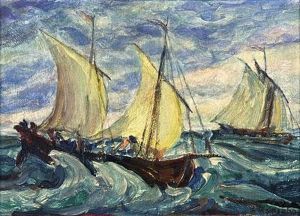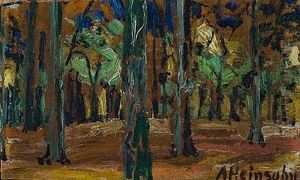Alfred Heinsohn Paintings
Alfred Heinsohn was a German artist, primarily known for his contributions as a painter and graphic artist. Born on April 23, 1875, in Hamburg, Germany, Heinsohn was part of the early 20th-century expressionist movement that was gaining momentum in Germany and across Europe.
Heinsohn received his artistic training at the Hamburg School of Arts and Crafts, which was known for its focus on practical artistic skills and was influenced by the Arts and Crafts movement. His early work was characterized by a naturalistic style, but as his career progressed, he became more influenced by the avant-garde movements of the time, particularly Expressionism.
As an artist, Heinsohn was known for his vibrant use of color and dynamic compositions. He was interested in capturing the emotional and psychological experiences of his subjects rather than merely their physical appearance. His works often depicted urban life and the modern experience of the individual within the cityscape. Heinsohn was also a part of the Hamburg Secession, a group of artists who sought to break away from the traditional art establishments and promote more innovative and modern artistic expressions.
Despite his talent and contributions to the German art scene, Alfred Heinsohn's life and career were relatively short. He struggled with mental health issues throughout his life, which affected his work and productivity. Heinsohn passed away on October 19, 1927, in Hamburg. Due to the socio-political climate of post-World War I Germany and the rise of the Nazi regime shortly after his death, which condemned modernist movements like Expressionism, Heinsohn's work was not as widely recognized or celebrated as some of his contemporaries. However, in recent years, there has been a growing interest in rediscovering and reassessing the contributions of lesser-known artists of this period, including Alfred Heinsohn.

